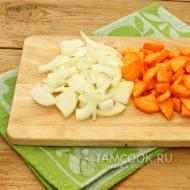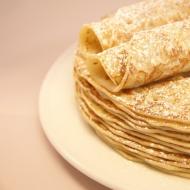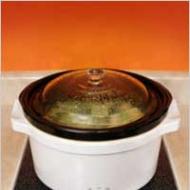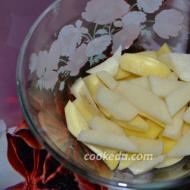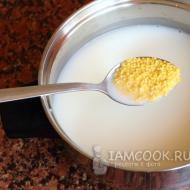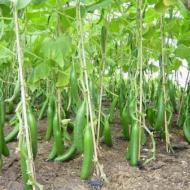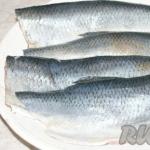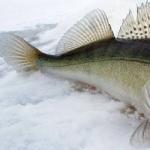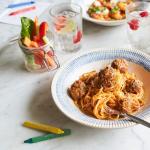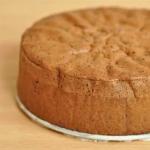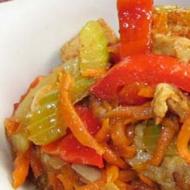
How to soak apples at home in jars, plastic barrels, buckets: the best recipes for the winter. What apples and varieties of apples can be soaked for the winter: list, names. How to properly and tasty soak apples for the winter with mustard, cabbage, pumpkin, and rye flour?
Ingredients:
- 10 kg apples
- tarragon, cherry and blackcurrant leaves
- for filling:
- 5 liters of water
- 125 g rye flour
- 0.5 tbsp. spoons of salt, sugar and dry mustard
Apples should be washed thoroughly. You can soak in wooden, glass, ceramic dishes. You can also use liner bags made of food grade polyethylene film. It is best to soak apples in wooden barrels. Line the bottom and walls of a well-washed and scalded barrel with pre-scalded straw - straw gives the apples a golden color. Instead of straw, you can take cherry or blackcurrant leaves. Place apples in rows, stems up. Arrange with straw or leaves every 2-3 rows.
To fill the apples, prepare a solution: bring 10 liters of water to a boil, add 400 g of sugar and 25 g of salt, 150 g of rye flour. Pour the cold solution over the apples until it lightly covers the apples. Leave the barrel for 10 days at a temperature of 20-25 °C. Remove foam and add solution daily. After this, move the barrel to a cold place, for example to a cellar. Here fermentation ends after 25-30 days.
Medium-sized apples with roach pulp, sour in taste, and ripening in autumn and winter are suitable for soaking. The best variety for this purpose is considered to be Antonovka vulgaris.
15-20 days after picking, sort the apples and rinse well. They are soaked in several ways.
Prepare a small wooden tub, enamel bucket or pan. Sew a bag of white material along the width of the dish and 20 cm longer than it. Place tarragon, cherry and black currant leaves in a 1-2 cm layer at the bottom of the bag placed in the container. Then place 2 rows of prepared apples, then again greens, and so on until the container is filled with fruits. Pull and twist the ends of the bag. Place a circle and bend on top. Pour the apples with a specially prepared filling (dilute rye flour, salt, sugar and mustard in a separate bowl with a small amount of water, pour boiling water, stir thoroughly, cover with a lid, let cool and settle).
The apples will be ready to eat in 35-40 days. They must be stored at temperatures below 0°C.
Ingredients:
- 10 kg apples
- 500 g rye or wheat straw or 200 g blackcurrant leaves
- for filling:
- 5 liters of water
- 75-80 g salt
- 150-200 g sugar or honey
- 50-60 g malt or 75-100 g rye flour
Cooking method: If you have a basement or cellar, you can soak the apples a little differently. In a prepared barrel with a capacity of 30-100 liters (it is better to take an oak one), line the bottom and walls with rye or wheat straw, which will give the apples a pleasant taste, smell, golden color and protect them from mechanical damage. Before use, rinse the straw and steam with boiling water (if there is no straw, it can be replaced with black currant leaves). Then place the apples in the container with the stems up, layering them every 1-3 rows with straw or blackcurrant leaves.
If the apples are not fragrant, you need to add spices or bee honey (in whole or in part instead of sugar). Among the spices, we can recommend parsnip, celery, tarragon, black currant leaves, cherry, mint and walnut.
Cover the barrel filled with fruits on top with straw or herbs, then with a napkin, a heated circle and place a load. Grease the edge of the barrel with vegetable oil and fill it with specially prepared filling. To fill: prepare a boiled solution of water, sugar and salt; In 1 liter of this solution, separately brew malt or rye flour and after 10-15 minutes pour it into the main solution and mix. You can also add dry mustard.
Keep the fruits drenched in the solution for 6-10 days at a temperature of 18-20 °C, and then lower them into a cold basement. After 45-60 days, the apples are ready to eat.
or
Ingredients:
- 10 kg apples
- 200 g dill
- 400 g green blackcurrant leaves
- for filling:
- 5 liters of water
- 50 g salt
- 50 g rye malt
- 150 g sugar
There are many ways to prepare apples and berries for the winter; let’s consider a popular and undeservedly forgotten method - urination. The essence of this process is that part of the sugar in fruits and berries, under the influence of lactic acid bacteria and yeast, is converted into lactic acid (0.5-1.5%), alcohol (1-3%), carbon dioxide, which have a preservative effect on fruit. Carbon dioxide and alcohol give the fruits a refreshing taste; the presence of lactic acid increases their nutritional value.
Below we describe how you can prepare soaked apples, pears, and berries in an oak barrel.
Briefly about packaging
For soaking apples, pears and berries, both single-bottom barrels-tubs, with a lid and a backing circle for pressure, and double-bottomed (filled barrels) with a hole in the bottom are suitable.
The barrels are pre-soaked until the leak stops. Before adding food, new oak barrels should be soaked in clean cold water for 3-5 weeks, changing the water every two or three days.
Immediately before laying the barrel, scald it with boiling water.
Peeing apples
For urination, healthy apples of autumn-winter and winter varieties are selected, which have a tartrate taste and dense pulp. The best varieties for urination are Antonovka-kamenichka and Antonovka ordinary. Summer varieties of apples are not recommended for soaking.
After being picked from the tree, the apples are kept for 15-20 days, then sorted, discarding rotten, wormy, broken, diseased ones, and washed thoroughly.
The bottom of the barrel is lined with clean rye or wheat straw, scalded with boiling water, on top of which well-washed apples are laid in dense rows. The walls of the barrel are also lined with straw. Leaves of mint, black currant, and cherry are placed between the rows of apples. Instead of straw, you can use blackcurrant and cherry leaves.
After filling the container, the apples are covered with a layer of straw on top. The tub is filled with wort, a clamp, a clean napkin and pressure are placed, covered with a lid, if the pressure protrudes above the level of the tub, the neck is covered with dense natural fabric folded in several layers and tied with twine. The wort level in the tub should be 3-4 cm higher than the pressure circle. The barrel is sealed, filled with wort through the hole, and loosely closed with a stopper or linen gag. During the first few days, apples actively absorb water; monitor the wort level. The container is kept for 5-7 days at a temperature of 18-20° for preliminary fermentation. Then remove the foam, add wort, close the neck or tightly plug the tongue hole and place it in a basement or other cold room, optimally no higher than 2-5 °C. After 1.5-2 months, soaked apples are ready for consumption.
Winter pears that are sour and low in astringency are also prepared by keeping them for 5-7 days after picking.
Wort for apples and pears
For 10 liters of water:
300-400 grams of sugar
150-200 grams of salt
1 liter malt milk
To prepare malted milk, take 100-150 g of malt flour (from sprouted barley), 1 liter of water, gradually heat with stirring and boil for 10 minutes. After cooling, pour into the wort. If there is no malt, you can use rye flour, 150-200 g diluted in a small amount of cold water. Then brew with boiling water, cool and add to the wort.
Sugar can be replaced with honey; instead of 100 g of sugar, take 150-200 g of honey. This product has a pleasant honey aroma and taste.
Pickled apples with cabbage
Prepare the oak tub and apples as described above. Peel the cabbage from the top leaves, rinse, chop, peel the carrots, grate them. Combine carrots with shredded cabbage, sugar, salt, squeeze with your hands until the juice releases. Transferring the vegetable mixture, place the apples in a container for soaking, sandwiching them tightly so that there are no gaps, place a 2-3 cm layer of cabbage on top, compact it, pour in the released cabbage juice, if it is not enough, make a brine at the rate of 80 g of salt and 60 g. sugar per 1 liter of chilled boiled water. Place whole cabbage leaves on top, cover with a backing circle, a clean napkin, and apply pressure. Keep at room temperature for 7-10 days, removing the foam, then transfer the container to a cold room, cellar, basement.
Apples 10 kg, cabbage 12-14 kg, carrots 10 pcs, salt 200 g, sugar 100 g.
Juicing lingonberries and cranberries.
Large ripe berries are selected, leaves and stalks are removed. Place in a tub or barrel and fill with wort: 100-300 g of table salt, 300-500 g of sugar per 10 liters of boiled water. You can pour boiled water over lingonberries and cranberries with the addition of sugar alone: 200 g per 10 liters of water. You can add cloves and a cinnamon stick to the hot wort.
After 10-15 days, the soaked berries are ready for consumption. Pickled cranberries and lingonberries last all winter in a cool place.
Wetting the plums
Select fruits with dense pulp, without damage or signs of disease.
The best varieties are common Hungarian, Italian Hungarian.
To prepare wort, 400-500 g of sugar, 150-250 g of salt and 100-150 g of malt are consumed per 10 liters of water. If honey is used instead of sugar, it is added in one and a half or double the amount of sugar.
After keeping at room temperature for 5-7 days for pre-fermentation, the tub is taken to a cold place. After a month, the plums are ready to eat.
When soaking apples and pears, you can add berries, and lingonberries, due to their chemical composition, can be soaked in boiled water without salt and sugar.
After use, be sure to fumigate the tubs and barrels with sulfur.
In order to prepare soaked apples, you need to spend 1 hour in the kitchen. You will need to wait one month to soak the apples.
Preparing pickled apples
ProductsApples - 5 kilograms
Black currant leaf - 25 pieces
Cherry leaf - 25 pieces
Mint - 4 sprigs
Water - 5 liters
Salt - 2 heaped tablespoons
Honey - two thirds of a glass (160 milliliters)
Rye flour - half a glass (70 grams)
How to cook soaked apples
1. Pour 5 liters of water into a saucepan and bring to a boil. Allow the water to cool to about 40 degrees.
2. Wash the apples.
3. Wash and scald currant, cherry and mint leaves - put in a deep bowl, pour boiling water over them, drain the water after 3 seconds.
4. While the water is cooling, prepare the wort from rye flour. To do this, pour half a glass of rye flour into a bowl and pour half a glass of boiling water, mix thoroughly until it becomes a homogeneous paste.
5. Add 1 cup of boiled hot water to the bowl with steamed rye flour and stir.
6. Add 2 tablespoons of salt to the wort and stir.
7. When the wort has cooled to 40 degrees, strain it and add two-thirds of a glass of honey. Stir until it is completely dissolved.
8. Add wort to a saucepan with cooled water and mix everything. Allow to cool to room temperature. The brine is ready.
9. Take a saucepan with a capacity of 10 liters. Place 10 blackcurrant leaves and a sprig of mint on the bottom. Place apples in one layer.
10. Place 10 cherry leaves and a sprig of mint on the apples. Add another layer of apples.
11. Lay out two more layers of apples and two layers of cherry, currant and mint leaves. In total, you will get 4 layers of apples and 5 layers of leaves in the pan. The topmost layer is five leaves of currant and cherry.
12. Place a wooden circle of suitable diameter on top of the pan with apples and put pressure on it.
13. Pour brine over the apples without removing the pressure. The brine should cover both the apples and the circle.
14. For a week, place the pan with apples in a room where the temperature does not rise above 18 degrees. Next, put it in a cool place.
Pickled apples will be ready in about a month.
How to cook soaked apples in a jar
1. Place leaves and spices on the bottom of the jar, then a layer of apples, then again leaves and spices - and so on until the top of the jar, there should be leaves and spices on top.
2. Pour brine over the apples.
3. Place a smaller lid on the jar and place a glass of water on top so that the apples are completely immersed in the brine.
4. Leave the apples at room temperature for 1 month, then cover with plastic lids and put in a cool place.
Fkusnofacts
- Late (winter) varieties of apples are suitable for soaking - it is best to use Antonovka or apples of the Anis, Pepin and Titovka varieties. The fruits should be ripe and firm, preferably medium in size. It is recommended to keep apples collected from the tree for 10 days at room temperature before urinating. Keep in mind that the smaller the apples, the more they will fit in the jar.You need to make extra brine: pour it into a jar and put it in the refrigerator. As the brine soaks, there will be less brine in the pan; you will need to add more. Apples must be completely immersed in brine to avoid souring.
Mint is an optional ingredient, but it gives apples a special, piquant taste. You can also add thyme, tarragon, basil, lemon balm, and raspberry leaves to enhance the taste. To enhance the apple flavor, you can replace half the water with store-bought apple juice. Since there is free space in the jars when filling apples, it can be used by adding fresh lingonberries or cranberries.
Dissolve honey in water whose temperature is not higher than 40 degrees; at a higher temperature it will lose some of its beneficial properties. If you don't have honey, you can use the same amount of sugar.
If you have a cellar, it is better to soak the apples in barrels. In an ordinary city apartment, difficulties arise with the subsequent storage of soaked apples, which require a cold place. An apartment (and not very economical for the refrigerator) option is to put the soaked apples in three-liter jars, close with plastic lids and put in the refrigerator.
Instead of rye flour, the traditional recipe uses rye straw, which is pre-steamed with boiling water. Or malt will do: for 1 liter of water you need 100 grams of malt, this mixture must be boiled after boiling for 15 minutes. For 10 liters of water, half a glass of wort is needed. You need to add sugar and salt to the solution, dissolve and strain before pouring the apples.
Pickled apples taste like a pickled snack, pickled-sweet, with vegetable undertones. If you like the taste of sauerkraut, soaked apples are definitely worth trying.
If you don’t have rye flour, the easiest way is to soak apples in honey and salt: take 80 grams of honey, 1 teaspoon of salt for 1 liter of boiled cold water, mix and add apples to this solution. Place the apples under pressure and leave them at room temperature for 3 weeks, then put them in the cold.
What are we cooking?
- Snacks
Since ancient times in Rus' in winter or early spring soaked apples(and definitely soaked in barrels) were welcome on every table. Rarely was a feast complete without pickled apples, and even now – a pickled apple and some vodka….
Wetting apples is a very simple and convenient way to extend the shelf life of these fruits and improve their taste. However, not all varieties are suitable for soaking. The best is "Antonovka". It is followed by: “Anise”, “Autumn Striped” (“Streifling”), “Saffron Pepin”, “Babushkino” and some other varieties with dense fruit pulp. But summer (early ripening) varieties of apples are completely unsuitable for soaking.
Apples for soaking are first sorted, rejecting those damaged by pests, spoiled, spotted, and sorted by size. Medium and small fruits are most suitable for soaking. Having selected them, they are washed with clean, cold water until any contaminants are completely removed.
What container should I use? It is better to take small oak barrels (capacity from 30 to 50 kilograms), which must be prepared just as well as when preparing pickles. The barrel should not have any foreign odor. Barrels are well described in.
So, several Russian ways of preparing soaked apples. The first, with rye straw and wort, is more correct, but there may be difficulties with the most necessary component - straw. The second one is simpler.
Soaked apples with rye straw and malt wort. The bottom and walls of the tub are lined with fresh, clean rye (or wheat) straw with a layer of 1-1.5 cm. Then the washed apples are laid in dense rows on the straw with the stems facing up. Each row of them is again covered with a layer of straw 0.5-1 cm thick, and the top row is covered with a layer of straw 1.5-2 cm. Filled barrels are sealed (the upper bottom is inserted) or covered with a wooden circle on which a load is placed.
The prepared filling is introduced through the tongue hole or over the edge so that the apples are completely covered with it. For 1 kg of apples, 800 g of filling solution is required. For 10 liters of such a solution, take: 9.5 liters of water (preferably spring water), 150 g of salt, 100 g of malt broth, 120 g of dry mustard, 230 g of sugar (you can put 450 g of honey instead, then the apples will be more aromatic and tasty ).
Pouring solution for soaked apples prepared as follows. First, a decoction of malt is made (sprouted and then dried barley grains are called malt). 100 g of malt is boiled in 1 liter of water for 10-15 minutes. The broth is cooled, kept for 24 hours, filtered and 100 g of the prepared malt wort is poured into the remaining amount of water (9.5 liters), adding sugar, salt, mustard and stirring until completely dissolved.
In the absence of malt, it can be replaced with wort made from rye flour, which is taken in the amount of 250 g per 1 liter of water. The flour must first be shaken in a small amount of cold water, and then brewed with boiling water, cooled, strained and poured into the prepared water. After pouring the solution, the tongue hole is loosely closed with a wooden stopper and the barrel is kept in the open air for preliminary fermentation of the apples. It lasts 4-5 days at a temperature of 15 degrees.
In the first 3-4 days, apples absorb a lot of moisture, so the barrel must be topped up with a filling solution or just cold water. The filling level during soaking and storage should touch the tongue hole or be 3-4 cm above the wooden circle.
When the main fermentation is over, the foam near the tongue hole is thoroughly washed off, the wooden circle in the open barrel is also washed and the foam is removed. If necessary, add fresh filling solution or wort, seal the barrel and place it in a basement, cellar or icehouse. During storage, slow fermentation of apples continues. The temperature should be no lower than 0 and no higher than 12 degrees. After 30-40 days great soaked apples ready to eat.
An indispensable condition for good quality soaked apples (tender pulp) is their ripening, but not over-ripening. Under finger pressure, they should only be slightly pressed.
You can wet apples in another way. Instead of straw, the bottom of the tub is covered with a layer of blackcurrant or cherry leaves. One row of apples is placed on the leaves with the stalks up, and apples are already poured on them (but not laid) up to half the tub. Now they put a layer of leaves again and again pour apples to the top onto a row of laid apples, covering them with leaves, and then fill them with a solution at the rate of: per 10 liters of water, 400 g of sugar (or 600 g of honey) and 50 g of salt, or per 10 liters water 250 g sugar, 50 g salt and 200 g rye flour for wort.
Let's say you want to soak apples in several ways. Keep in mind that the ones that recommend a high sugar solution should be consumed first.
You can soak apples not only in wooden barrels and tubs. Large enamel buckets are often used for this. In this case, you need to sew a bag from white cotton or canvas fabric the width of the dish and slightly longer in height. It is placed in the dishes, and spices and apples are placed at the bottom of the bag until the dishes are completely filled. The bag is tied at the top, a circle and a weight are placed on it, and finally it is filled with the prepared wort or other filling.
ru-dachniki recommends looking at these barrels for pickling, pickling/soaking. Really good, high-quality barrels made of Caucasian oak, you can choose the right volume, with delivery throughout Moscow and all of Russia. Pickup available. Good combination of price and quality.

